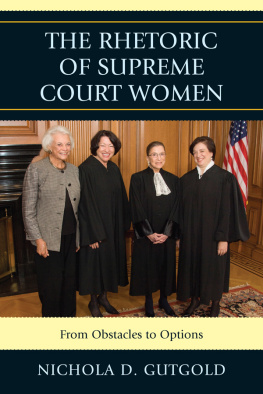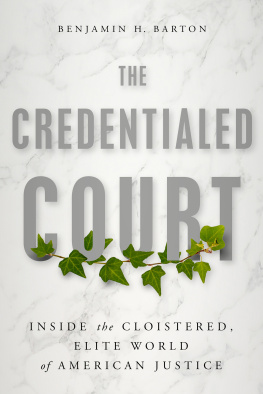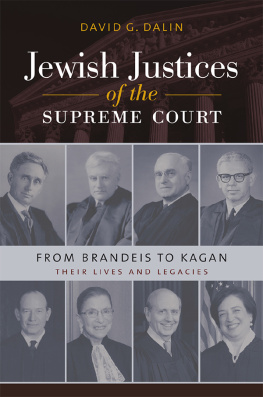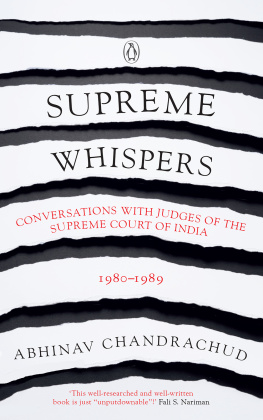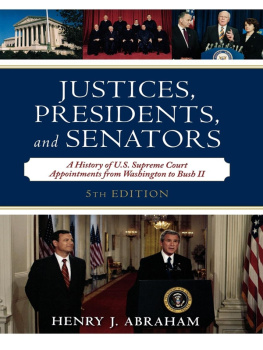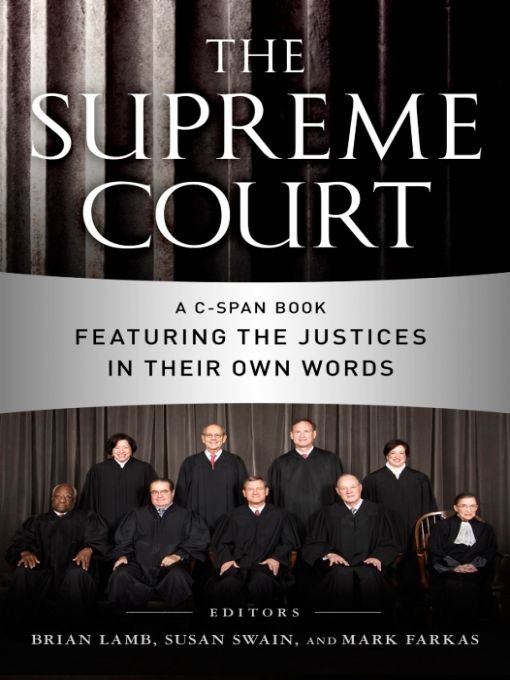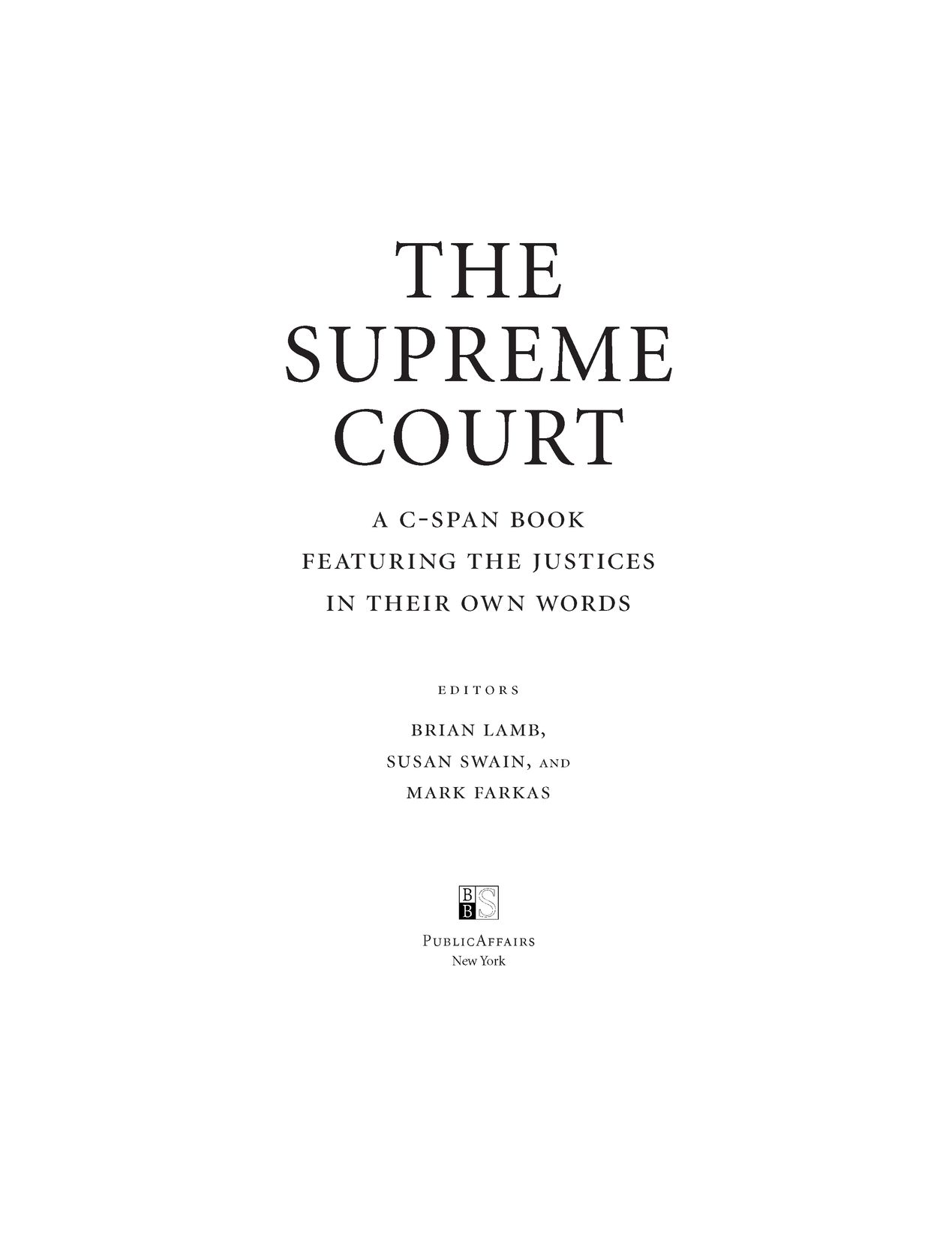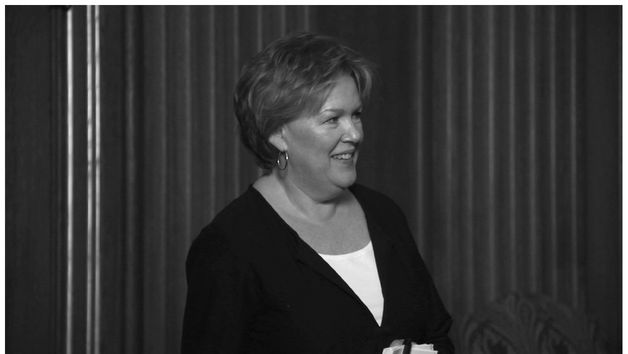Table of Contents
To my gal pals, a family by choice, for their incredible friendship. And, to RGK, the best ongoing business partner imaginable.
s.s.
To Paige, Sydney, and Meghan for all of their unconditional love and understanding. And to Terrywhose instincts always lead in the right direction.
M . F.
The judicial power of the United States shall be vested in one Supreme Court, and in such inferior courts as the Congress may from time to time ordain and establish. The judges, both of the supreme and inferior courts, shall hold their offices during good behaviour, and shall, at stated times, receive for their services a compensation, which shall not be diminished during their continuance in office.
ARTICLE III, SECTION 1
CONSTITUTION OF THE UNITED STATES
INTRODUCTION
The thing that makes our system of government unique is that its bound by the rule of law, by a written constitution that lawyers and judges have to interpret. So you need to appreciate that something different is going on here than what goes on in the Capitol building or in the White House, and you need to appreciate how important it is to our system of government.
CHIEF JUSTICE JOHN ROBERTS
C-SPAN INTERVIEW, JULY 2009
THIS BOOK Is REMARKABLE in recording the only time that all the living Supreme Court justices, the nine sitting members and their three retired colleagues have granted interviews to a single television network. They did so in support of a feature documentary created by C-SPAN in the fall of 2009 and updated in 2010.
We began this project with the idea that wed focus on the history of the building, not knowing how many justices would agree to participate. But as more of them signed on for interviews, it became apparent to us that we were being given an incredible opportunity to learn about what happens inside the Court, the branch of government least visible to the public, through the eyes of the justices themselves.
This project would not have been possible without the assistance of Chief Justice John Roberts, C-SPAN producer Mark Farkas, and the Courts chief public information officer, Kathy Arberg. What follows is the story within the story of how the Supreme Court came to terms with television cameras, if only briefly.
Historically, the Supreme Court and its members have distinguished themselves for their aversion to the publicitylifeblood to many Washingtonians. Lifetime appointments give justices little incentive to be in front of the public. Indeed, justices over the years have described the pains they take to insulate themselves from public life so that their rulings are reached independent of popular opinion. Yet the Court is not a cloister. Earlier justices may have been somewhat monastic in their habits; by contrast, todays top jurists routinely dip their toes into the waters of public life, beginning with the high profile gauntlet of todays judicial confirmation process. Justices in the modern era routinely accept speaking engagements, take on teaching assignments, write books, and undergo the rigors of publicity tours. Some, by no means all, grant infrequent interviews with print and television organizations.
Kathy Arberg, the Courts chief public information officer.
Because Court policy bans television cameras from covering the seventy-five or so public arguments scheduled for each term, C-SPAN tries to have cameras in front of the justices whenever possible outside their marble home on Capitol Hill. Over the years, many of the justices have welcomed C-SPAN cameras, likely seeing our coverage of speeches and panel sessions as part of a broader, ongoing effort to involve and inform the public about the Court and its work. In particular, Justices OConnor, Breyer, Kennedy, and Thomas have participated in C-SPAN-produced programs such as Students and Leaders, a series that introduces high school students to history makers. In these public settings, justices will talk about their jobs, how the Court functions, and its role in society, but traditionally refrain from discussing prior cases or issues that may come before the Court.
Others emulate retired Justice David Souter, noted for his quip that cameras would come to the Supreme Court over my dead body. Justice Samuel Alito, among the more recent additions to the Court, has done little to cultivate public visibility since his 2006 Senate confirmation hearings. Justice Antonin Scalia, a longtime and vocal opponent of cameras in the Supreme Court, has sometimes been known to carry that opposition to television coverage far from the Court building. While Justice Scalia has granted occasional television interviews, there are a few times on record when the arrival of a C-SPAN camera crew at one of his speeches had an unhappy sequel: our would-be chroniclers were led to the door.
Though cameras are not permitted in the Courts ornate marble courtroom during oral argument, technology has been allowed a modest toehold there. Since 1955, the Court has created audio recordings of its hearings, which are later turned over to the National Archives for future research by scholars and journalists. The contested presidential election of 2000 affected this practice in a significant way. As that bruising contest made its way to the Court for resolution, C-SPAN requested permission to televise the arguments in Bush v. Gore. Other media organizations quickly joined in the petition. After review, then Chief Justice Rehnquist said no to television but citing the heightened public interest in the case agreed to immediately release the Courts audio recording. On December 11, 2000, just minutes after the case was heard, the Court released its audio file. Radio and television organizations, including C-SPAN, instantly carried the argument in its entirety, giving many Americans their first exposure to the rapid-fire intellectual jousting of the Courts oral argument.
Precedent counts for a lot around the Supreme Court. The heightened public interest standard provided a framework for additional requests for same-day release of the Courts audio tapes, which Chief Justice Rehnquist continued to review, as did his successor, Chief Justice Roberts. Between 2000 and 2010, C-SPAN was permitted to broadcast twenty-one such cases. Then, as the term opened in the fall of 2010, the Court announced a new policy: Audio recordings of each oral argument would be posted to the Courts Web site at weeks end. While not exactly real-time accessibility to the Courts proceedings, the new policy does take the Court out of the business of reviewing each media request for access as it is made and gives the media and the public more material more quickly than in the past. Unfortunately, a decade of experience with audio recordings seems not to have opened the door to television coverage of the Court, even a little. In 2005, when John Roberts was chosen to succeed Chief Justice Rehnquist, C-SPAN suggested a demonstration of digital technology that could allow unobtrusive coverage of oral arguments. The chief politely demurred. In 2009, as this book first neared completion, the Roberts Court underscored its distrust of cameras in the courtroom with a 54 decision that had the effect of blocking a ninth circuit federal district court from posting video of a trial onto the popular video Web site, Youtube.


